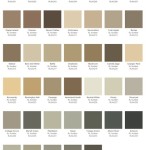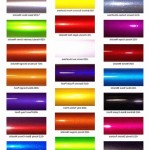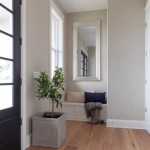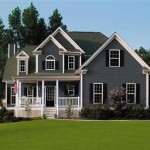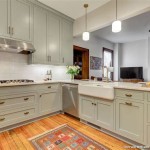What Is The Best Color to Paint a Wood Fence?
Selecting the ideal paint color for a wood fence involves considering aesthetics, functionality, and the longevity of the fence itself. While personal preference plays a significant role, understanding the impact of different colors on the wood, the surrounding environment, and the overall visual appeal is crucial for making an informed decision. Factors such as sun exposure, climate, existing landscaping, and the style of the house all contribute to determining the best color choice.
The purpose of a fence extends beyond simply marking property lines. It provides privacy, security, and can significantly enhance the curb appeal of a property. The color of the fence influences the perceived size and shape of the yard and can either complement or clash with the surrounding landscape. Therefore, a thoughtful approach to color selection is essential for maximizing the benefits a well-painted wood fence offers.
Understanding the Impact of Color Psychology
Color psychology explores how different colors evoke specific emotions and perceptions. While subjective, certain general associations are widely recognized. Whites and light neutrals often create a sense of spaciousness and tranquility. Darker shades, like browns and grays, tend to appear more grounded and sophisticated. Vibrant colors, such as greens and blues, can create a lively and welcoming atmosphere but might also be overwhelming if used inappropriately.
In the context of a wood fence, understanding these psychological associations is important. A white fence might suit a cottage-style garden, creating a light and airy feel. Conversely, a dark brown fence could complement a modern, minimalist home, adding a sense of structure and elegance. The key is to choose a color palette that aligns with the desired aesthetic and evokes the intended mood.
Furthermore, the perceived warmth or coolness of a color also matters. Warm colors, such as yellows, oranges, and reds, tend to feel energetic and inviting. Cool colors, like blues, greens, and purples, often evoke a sense of calm and serenity. Considering the overall ambiance one wishes to create in the outdoor space can help narrow down the color options. For instance, if the goal is to create a relaxing retreat, opting for cooler tones might be more suitable than using bold, vibrant hues.
Considering Environmental Factors and Practicality
The climate and surrounding environment significantly influence the longevity and appearance of a painted wood fence. Darker colors absorb more heat from the sun, which can lead to faster degradation of the wood, causing it to warp, crack, or fade more quickly. In hot, sunny climates, lighter colors are generally preferable as they reflect sunlight and help keep the wood cooler, thus prolonging its lifespan. However, lighter colors may show dirt and mildew more readily, requiring more frequent cleaning.
The presence of trees and other vegetation also affects color choice. If the fence is surrounded by dense foliage, a color that complements the greenery is often a good option. Neutrals like gray or brown can blend seamlessly with the natural surroundings, while a contrasting color can create a striking visual effect. However, be mindful of potential staining from leaves and berries, which may necessitate a more durable and stain-resistant paint.
Moreover, the existing color scheme of the house and other outdoor structures should be taken into account. The fence should complement the overall aesthetic of the property and not clash with the house's siding, trim, or roof. Ideally, the fence color should either match or harmonize with the existing color palette, creating a cohesive and visually appealing look. Consider taking photographs of the house and surrounding landscape to help visualize how different colors might appear.
Beyond aesthetics, practical considerations like the cleaning and maintenance requirements associated with different colors are also important. Light colors may require more frequent cleaning to remove dirt and mildew, while darker colors might show fading and scratches more easily. Selecting a high-quality paint that is specifically designed for outdoor use and is resistant to fading, mildew, and cracking is essential for ensuring the long-term durability and appearance of the fence.
Exploring Popular Color Choices and Their Benefits
Several colors are consistently popular choices for wood fences due to their versatility, aesthetic appeal, and practicality. White fences are a classic option that adds a clean and bright look to any property. They are particularly well-suited to cottage-style gardens and traditional homes, creating a charming and inviting atmosphere. However, white fences require regular cleaning to maintain their pristine appearance and may not be ideal in areas with high levels of dirt or pollution.
Gray fences have gained popularity in recent years, offering a modern and sophisticated alternative to traditional white or brown. Gray is a versatile color that complements a wide range of architectural styles and landscaping designs. It also tends to be more forgiving than white, as it hides dirt and mildew more effectively. Various shades of gray are available, from light and airy to dark and dramatic, allowing homeowners to customize the look of their fence to their specific preferences.
Brown fences are a timeless and natural choice that blends seamlessly with the surrounding environment. Brown is a warm and inviting color that complements a variety of landscaping styles, from rustic to contemporary. Different shades of brown can create different effects, from a light and airy feel to a rich and sophisticated look. Brown fences also tend to be relatively low-maintenance, as they hide dirt and mildew well and are less prone to fading than lighter colors.
Black fences are a bold and dramatic option that can add a touch of elegance and sophistication to any property. Black is a versatile color that complements a wide range of architectural styles and landscaping designs. It can also create a sense of privacy and security by visually defining the property boundary. However, black fences absorb more heat from the sun than lighter colors, which can lead to faster degradation of the wood. They may also show scratches and fading more easily.
Ultimately, the best color to paint a wood fence depends on a variety of factors, including personal preference, the surrounding environment, the style of the house, and practical considerations like maintenance requirements. By carefully considering these factors and exploring different color options, homeowners can make an informed decision that enhances the beauty and functionality of their property.
Selecting the right paint also involves understanding the different types of paint available. Acrylic latex paints are a popular choice for wood fences due to their durability, ease of application, and water-based formulation, making cleanup easier. Oil-based paints offer excellent adhesion and a durable finish but require mineral spirits for cleaning and may take longer to dry. Consider the VOC (volatile organic compounds) content of the paint, opting for low-VOC or zero-VOC paints to minimize environmental impact and potential health concerns.
Before painting, proper preparation of the wood fence is crucial for ensuring a long-lasting and professional-looking finish. This includes cleaning the fence to remove dirt, mildew, and loose paint, sanding any rough spots, and applying a primer to help the paint adhere properly. Applying two coats of paint is generally recommended for optimal coverage and durability.
The choice of finish, such as matte, satin, or gloss, also impacts the appearance and performance of the painted fence. Matte finishes offer a flat, non-reflective look that hides imperfections well but may be more difficult to clean. Satin finishes provide a subtle sheen that is both durable and easy to clean. Gloss finishes offer a high-shine look that is very durable and easy to clean but may highlight imperfections more readily. Consider the desired aesthetic and practical considerations when selecting the finish.
Finally, remember to test the paint color on a small, inconspicuous area of the fence before committing to painting the entire structure. This will allow you to see how the color looks in different lighting conditions and ensure that it complements the surrounding environment. It is also a good opportunity to assess the paint's coverage and adhesion.

Fence Paint Color Ideas To Boost Curb Appeal Wow 1 Day Painting

Fence Paint Color Ideas To Boost Curb Appeal Wow 1 Day Painting

Which Fence Paint Is Best Top 5 Paints

Choosing The Right Colour For Your Fence Makeovers

14 Best Backyard Fence Color Ideas For Stain Or Paint

Fence Stain Colors How To Choose The Best A Complete Guide

Fence Paint Colours

Do S And Don Ts For Choosing The Right Fence Colour Maria Killam

14 Best Backyard Fence Color Ideas For Stain Or Paint

The Garden Fence Colours Of 2024 Coat Paints
Related Posts

